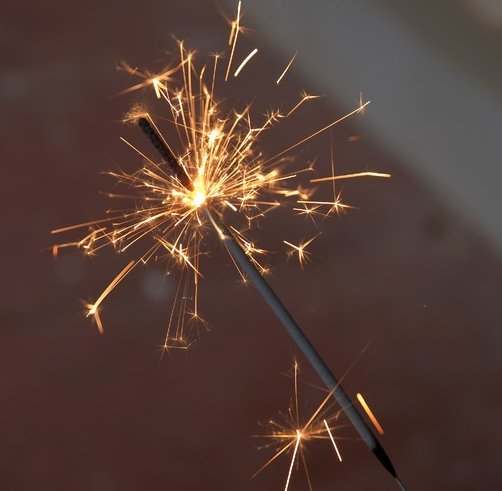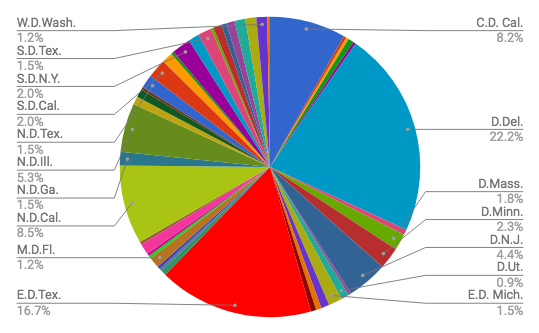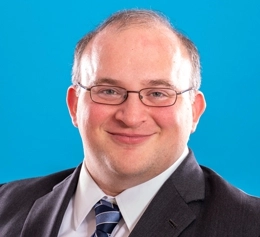Since tomorrow we’re celebrating Independence Day here in D.C., I thought I’d go back and revisit the Independence From Eastern Texas case, TC Heartland, to see how big of an effect it has really had so far.
Are we talking:
Or more of a:
Prediction And Reality
Post-TC Heartland, a number of predictions (including my own) were made about where cases would go from the Eastern District of Texas. After the first week, I provided some initial numbers showing what had happened so far. Below is an updated graphic showing the venue of all cases filed after the TC Heartland decision through June 29th.
E.D. Tex.’s share rebounded slightly after the initial dip shown in the first week, settling in at around 16% of cases. While this is still disproportionate compared to the population of the district and the presence of technology companies there, it’s a huge improvement over the ~40% that was historically filed there. D. Del. absorbed around 10% of E.D. Tex.’s missing 25%, going from roughly 12% to roughly 22%. N.D. Cal. absorbed around 5%.
The remaining 10% of cases seem to have gone to various district courts across the country, dictated by the location of defendants.
We shouldn’t expect to see a uniform distribution of patent cases across the 78 district courts. Some areas have more population than others (e.g., E.D.N.Y.’s 8 million vs. D. Wyo.’s 590,000). Some areas have more tech (N.D. Cal.) or biotech (D. Mass.) industry than others (E.D. Tex.). But we also shouldn’t expect to see the kind of dominance that the Eastern District once had, whether there or in any other district (Delaware included.)
Predictions of the effects of the TC Heartland decision were that litigation would primarily shift to D. Del. and N.D. Cal. That’s been partially true. But we also see E.D. Tex. maintaining a higher-than-expected number of filings, and a portion of the previous Texas cases spreading out to more local courts.
In other words, the TC Heartland decision was neither a firework nor a sparkler, but somewhere in between. Litigants still wind up in the Eastern District more often than is reasonable, but it’s better than it was before TC Heartland.




